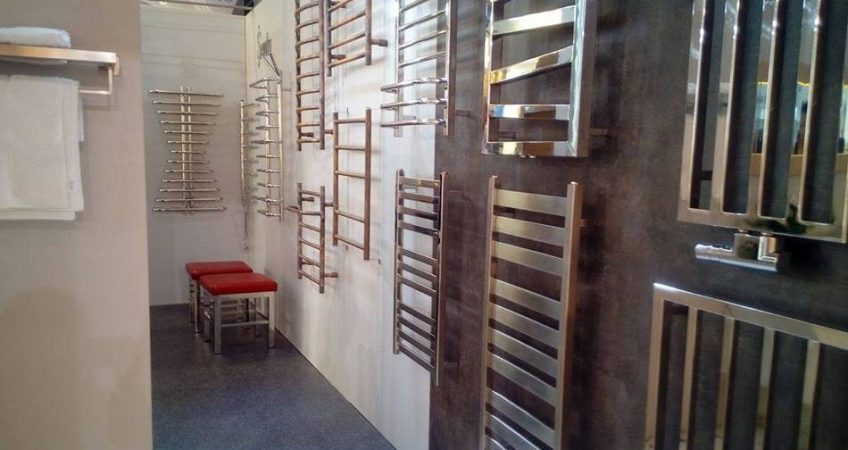Today, a heated towel rail is not only a heating device that maintains the optimal temperature in the bathroom, but also an important interior element.
There are two types of towel rails: electric and water.
Electric heated towel rail is very convenient to use, since it can be installed in almost any room, from the bathroom to the dressing room. The equipment is mounted on the wall and works from the power supply network. Its advantages include:
— high heat transfer coefficient;
— no risk of leakage;
— usability;
— corrosion resistance;
— the degree of heating is controlled by the thermostat.
This being said, it should be borne in mind that this heated towel rail consumes the electric power depending on the capacity of the heating element and the size of the heated towel rail itself.
Water heated towel rail can be installed in a closed heating system or connected to a hot water supply system.
If the product is installed in a closed heating system, this does not provide special technical restrictions. However, if the heated towel rail is connected to a hot water supply system (which is the most common method), then the requirements for it should be higher. This is due to the fact that hot water is highly saturated with oxygen, which is known to be a good oxidizer.
In order to avoid the appearance of through holes /fistulas/ in the walls of the heated towel rail due to electrochemical corrosion, it is necessary to ensure reliable metallic bonding between the water riser pipes and metal terminal devices (mixer, heated towel rail). Simply put, the heated towel rail must be grounded on the metal pipe riser. The potential will be leveled and the current will have no direction to flow from or to.
N.B. For the avoidance of misunderstanding, we recommend to consult your plumber before ordering a heated towel rail!





